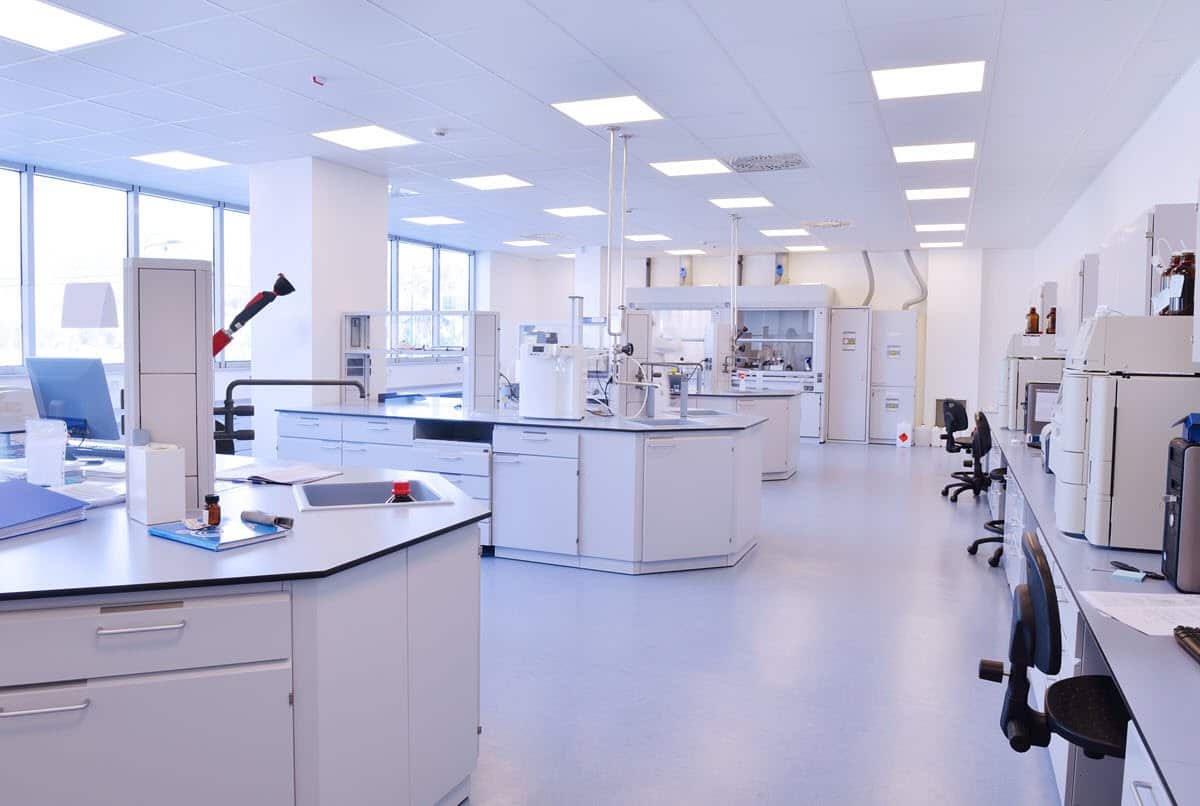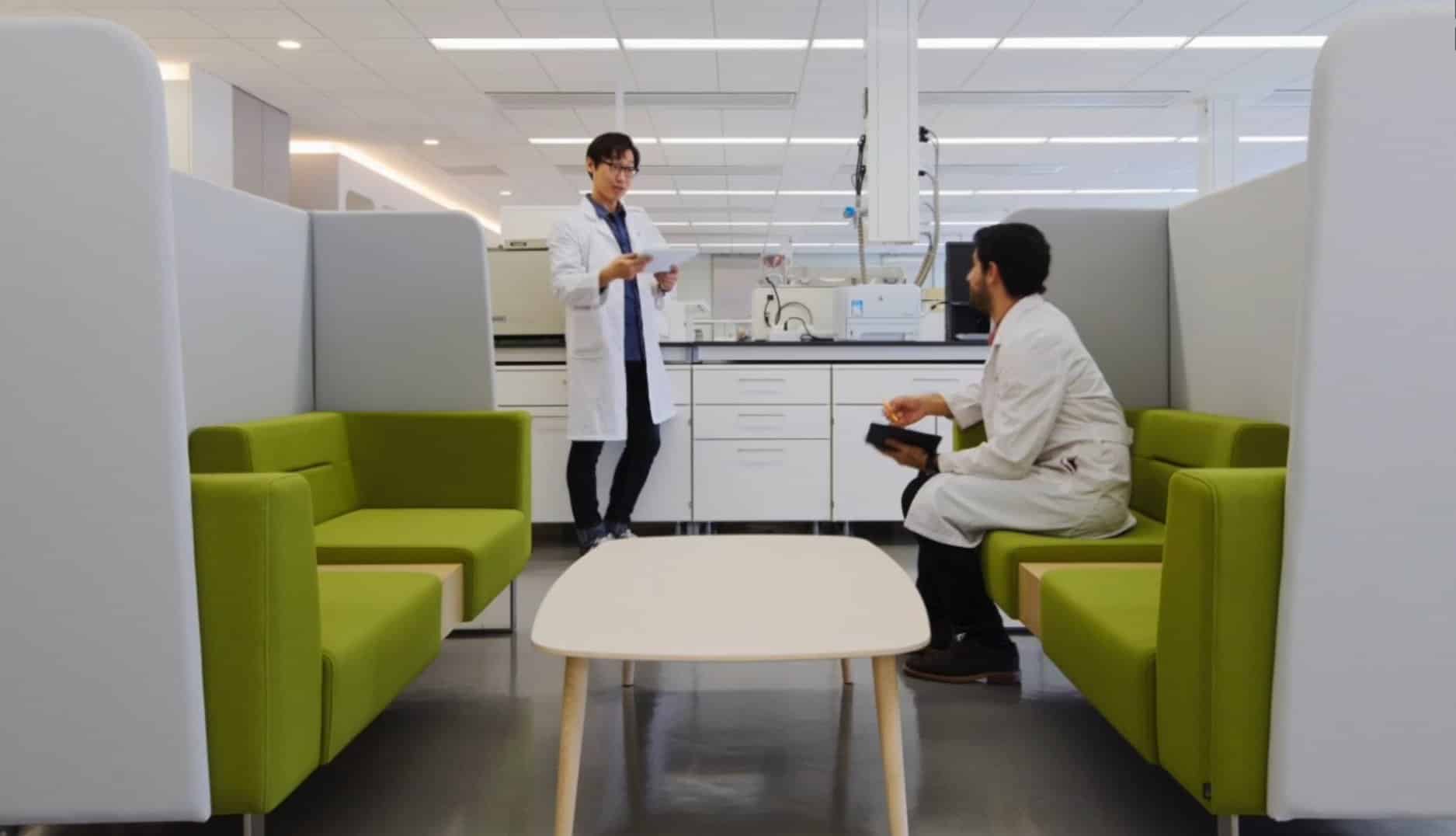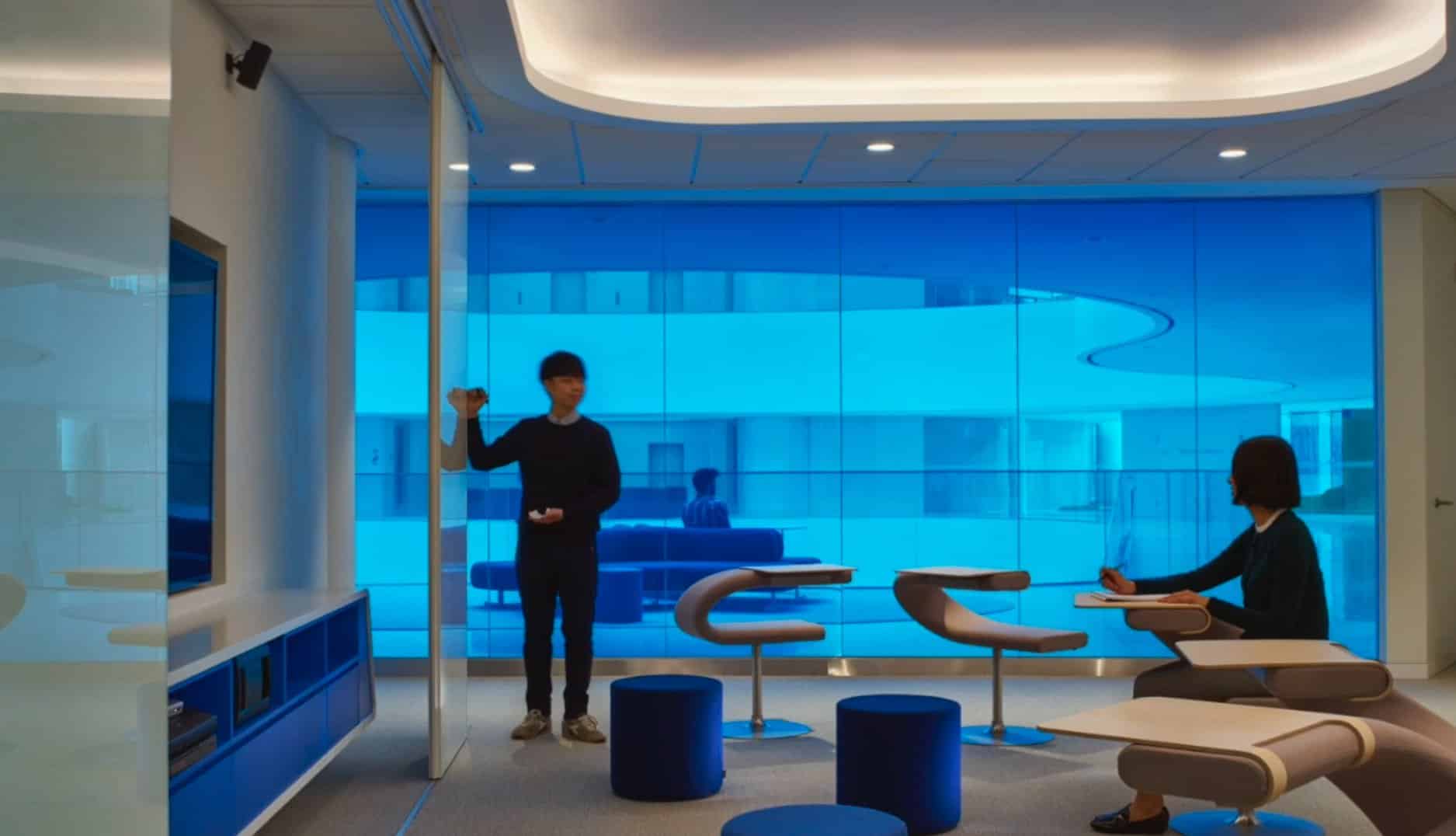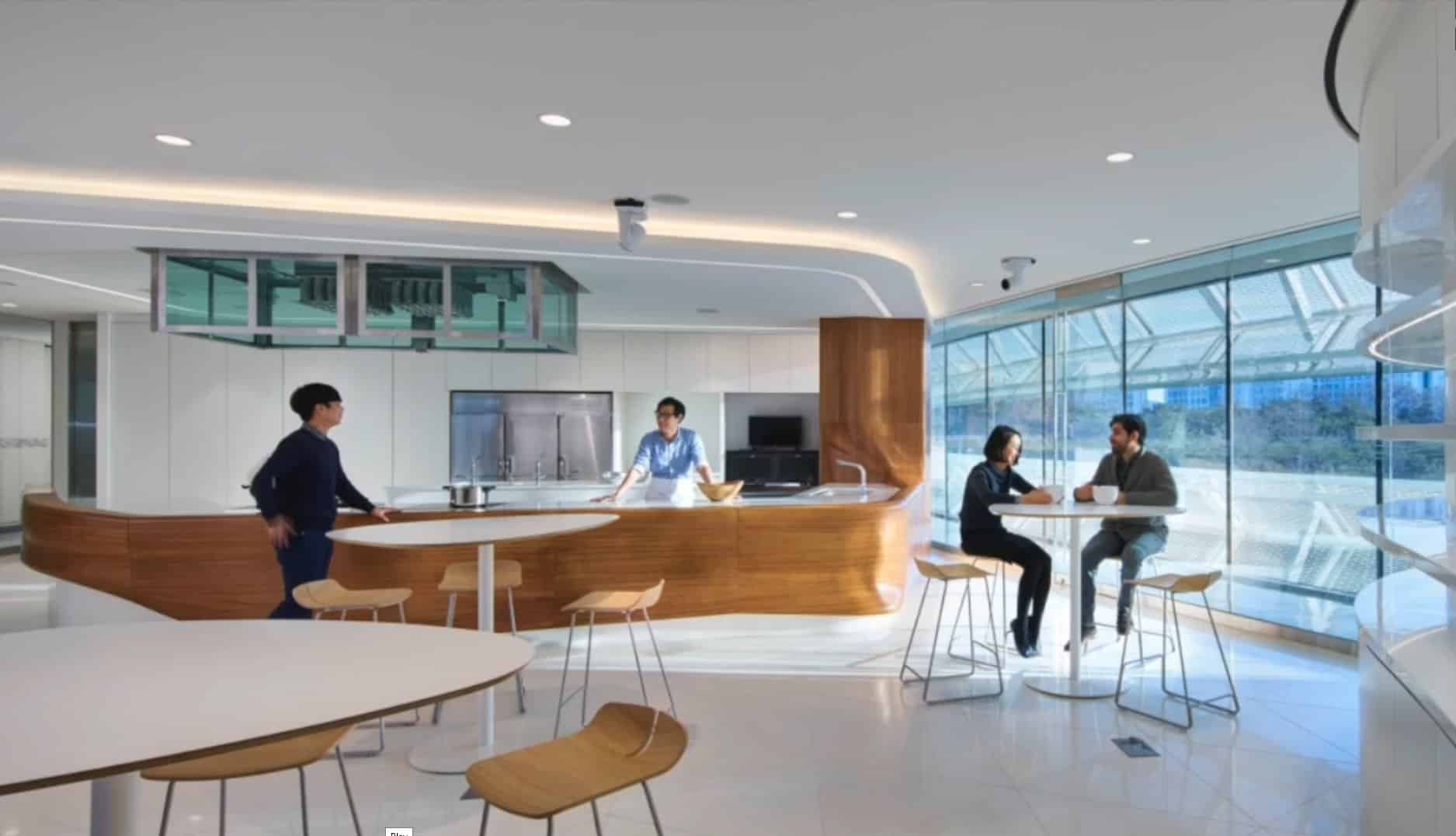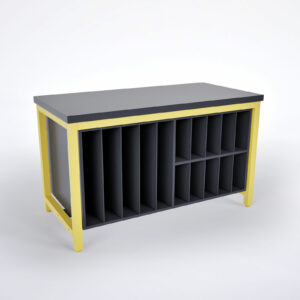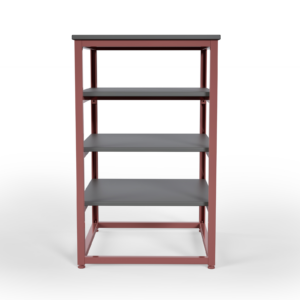We recently attended the Lab Design Conference in Orlando, Florida where the theme was “Emerging Labs of the Future.” We take a look at how laboratory design is borrowing a chapter from modern office design to create open, flexible laboratory designs that make research activities more efficient while helping to encourage employee recruiting and retention.
Why Laboratory Designs Need to Change
What were the key takeaways from the lab design conference?
Valencia Dussault, Formaspace Design Consultant for the US Southeastern Region, and Corey Hutchinson, Formaspace Sales Director, found that today’s lab facility designers face many of the same challenges as architects and designers creating modern office spaces in the business world.
In their session “The Evolution of Next-Generation Labs,” architects Abigail Alexander and Robert DeGenova explained how laboratory research is in the midst of a radical transformation in both organization and methodology.
Why is this happening? There is increased pressure for laboratories to be more productive, to take advantage of the latest technology and to engage with others in a more collaborative approach.
Just as in the business world, advances in digital communication are driving changes in the laboratory work environment. Technology has allowed today’s workers – whether in the office or in the laboratory – to work from anywhere, even from home.
Flexible office designs are a bit further ahead in taking advantage of this, by offering open workspaces (where employees are no longer tied to a single office desk or cube) and a variety of meeting spaces to encourage collaboration.
What Laboratory Design Can Learn from Flexible Office Design
Continuing with this theme, architects Steven G. Copenhagen and Toni Loiacano conducted a session titled “A Glimpse into the Scientific Workplace of the Future.” Copenhagen and Loiacano pointed out that scientific organizations have generally lagged behind the dynamic workplace transformations that are taking place in today’s business environments.
To illustrate the point, they looked at several case studies, including CJ Blossom Park, the 2018 Lab of the Year, which provides a boundary-less laboratory environment designed to increase productivity, efficiency, and creativity.
According to Steve Copenhagen, a principal with CannonDesign, “the design of CJ Blossom Park is rooted in the ‘New Scientific Workplace’ concept—a radical design approach designed to offer best-in-class research technology and remarkable amenities to boost recruitment and retention of top researchers.”
What Are the Key Elements That Distinguish the Modern Laboratory Design?
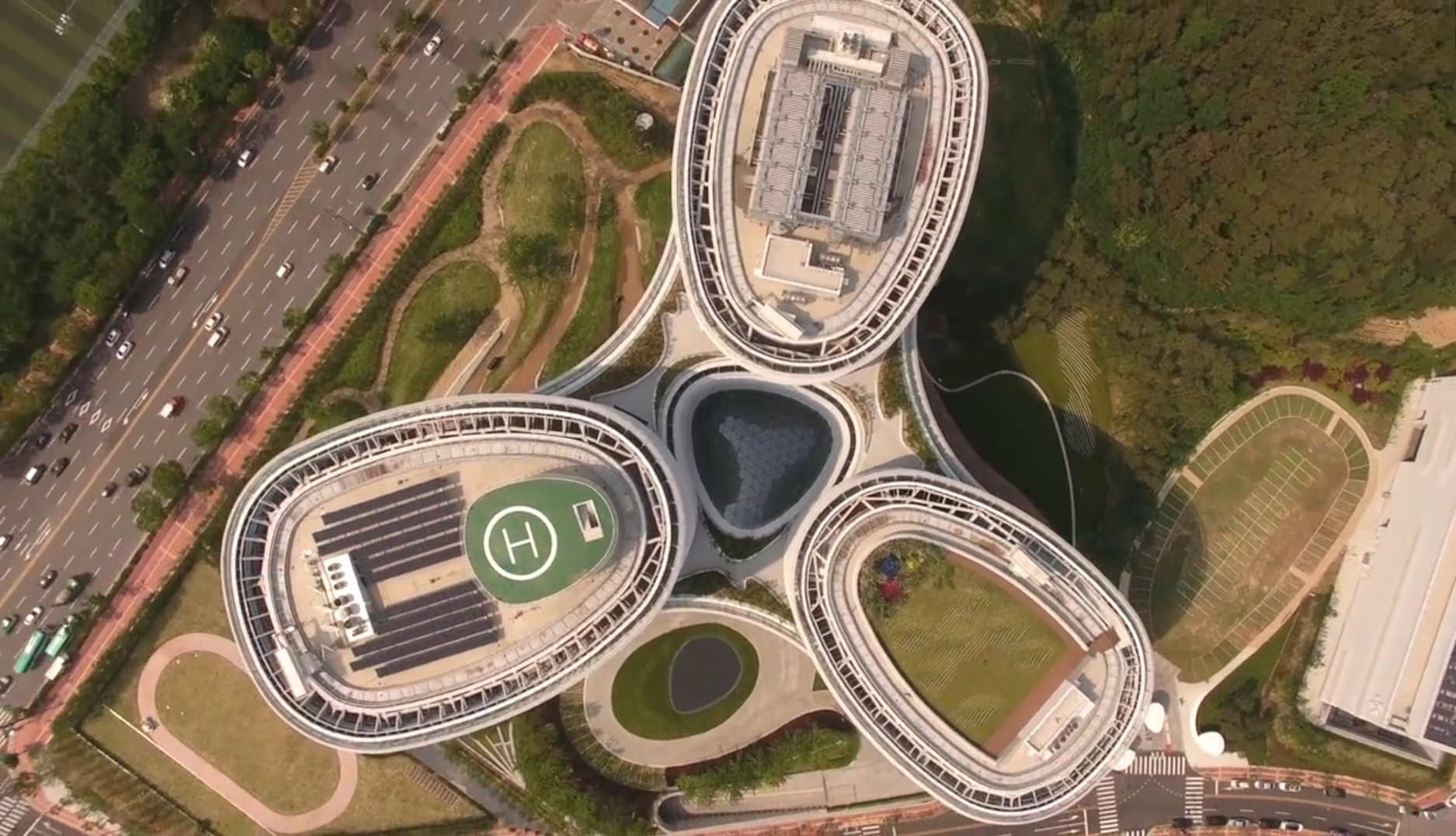
1. Integrated science parks encourage maximum collaboration between scientific researchers.
CJ Blossom Park is a classic example of a built-for-purpose science park – designed to bring together as many laboratory research scientists as possible under one roof. The facility incorporates approximately 750,000 ft.² of dedicated laboratory space for its 900 research employees.
(It also features nearly 50 other unique amenity spaces, adding an additional 100,000 square-foot to the building floor plate – we’ll touch on that later.)
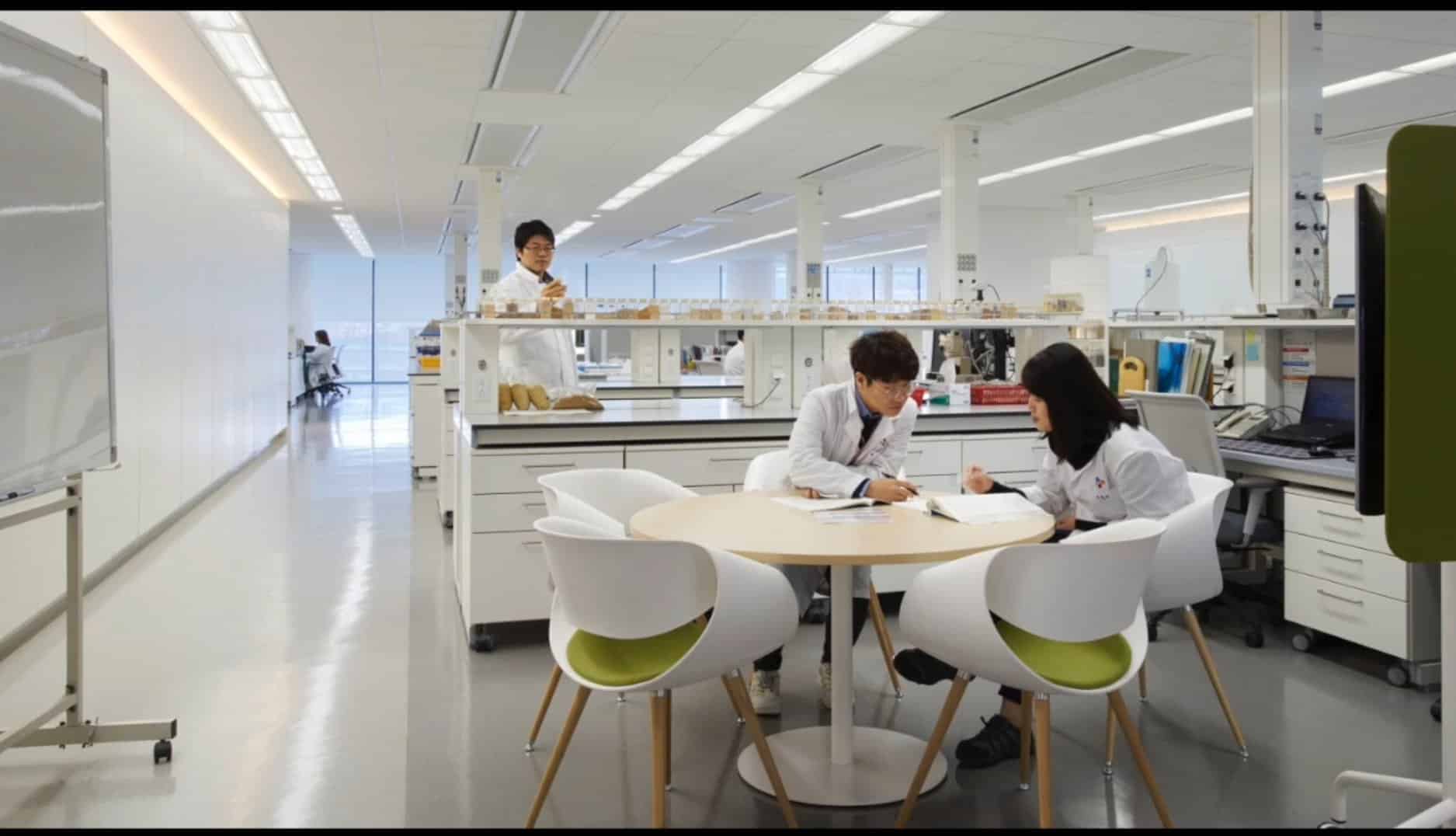
2. With huddle areas and collaborative work tables designed into the laboratory footprint, there’s no need to walk down the hall to conduct an impromptu meeting.
Today’s open plan laboratories incorporate a generous number of collaborative worktables and casual meeting spaces, such as huddle rooms, designed to encourage collaboration on scientific research projects.
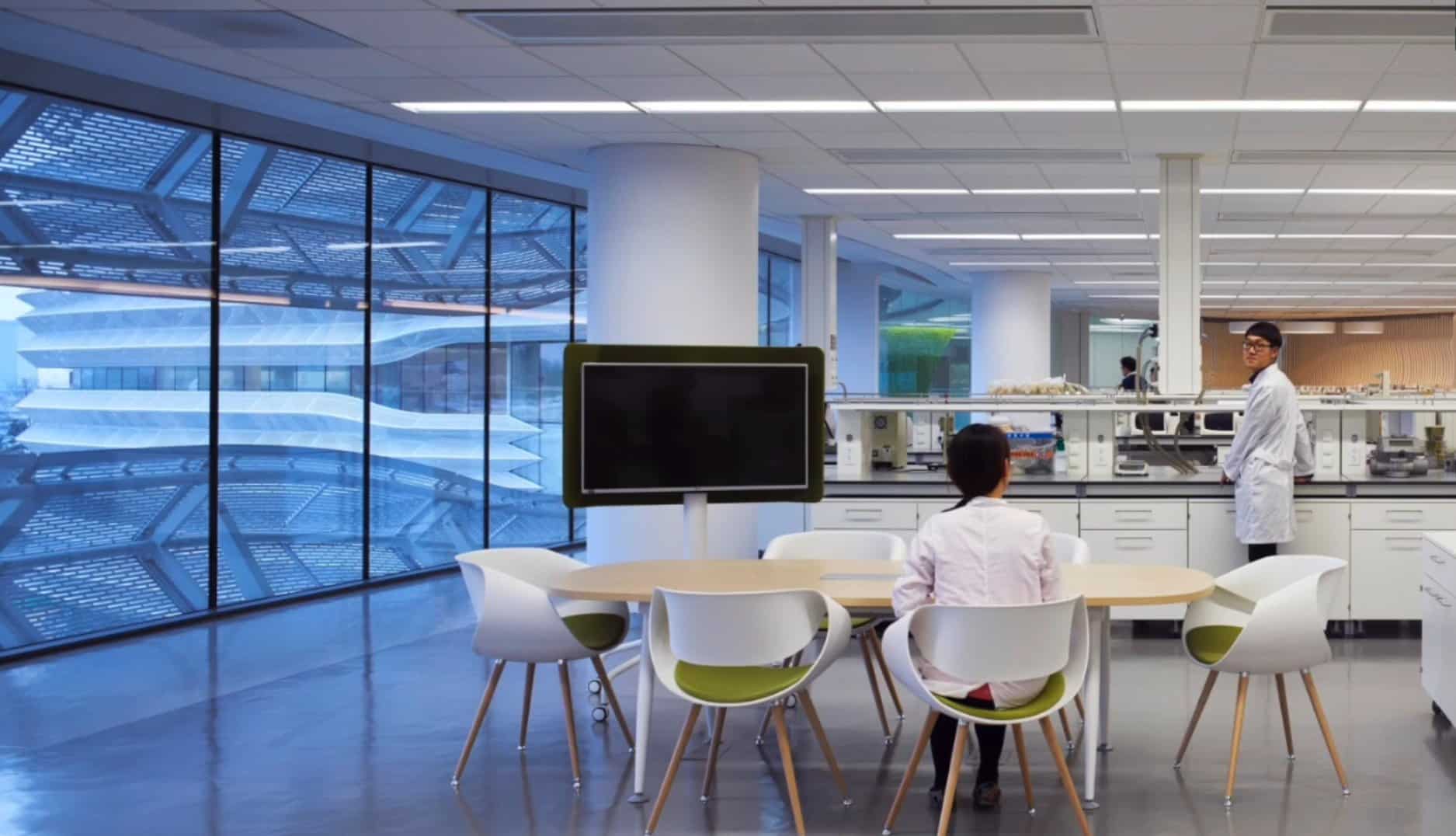
3. Modern laboratory meeting room options range from dedicated glass-walled rooms with sophisticated A/V systems to smaller conference areas adjoining laboratory facilities.
Following the trend of modern office design, next-generation laboratories need to provide a sufficient number of formal environments for conducting meetings. These allow research employees to gather, brainstorm on new ideas and discuss project milestones while taking advantage of sophisticated telepresence systems to beam in collaborators from remote locations. Smaller conference areas conveniently located adjacent to laboratory research zones allow lab teams to meet without walking long distances.
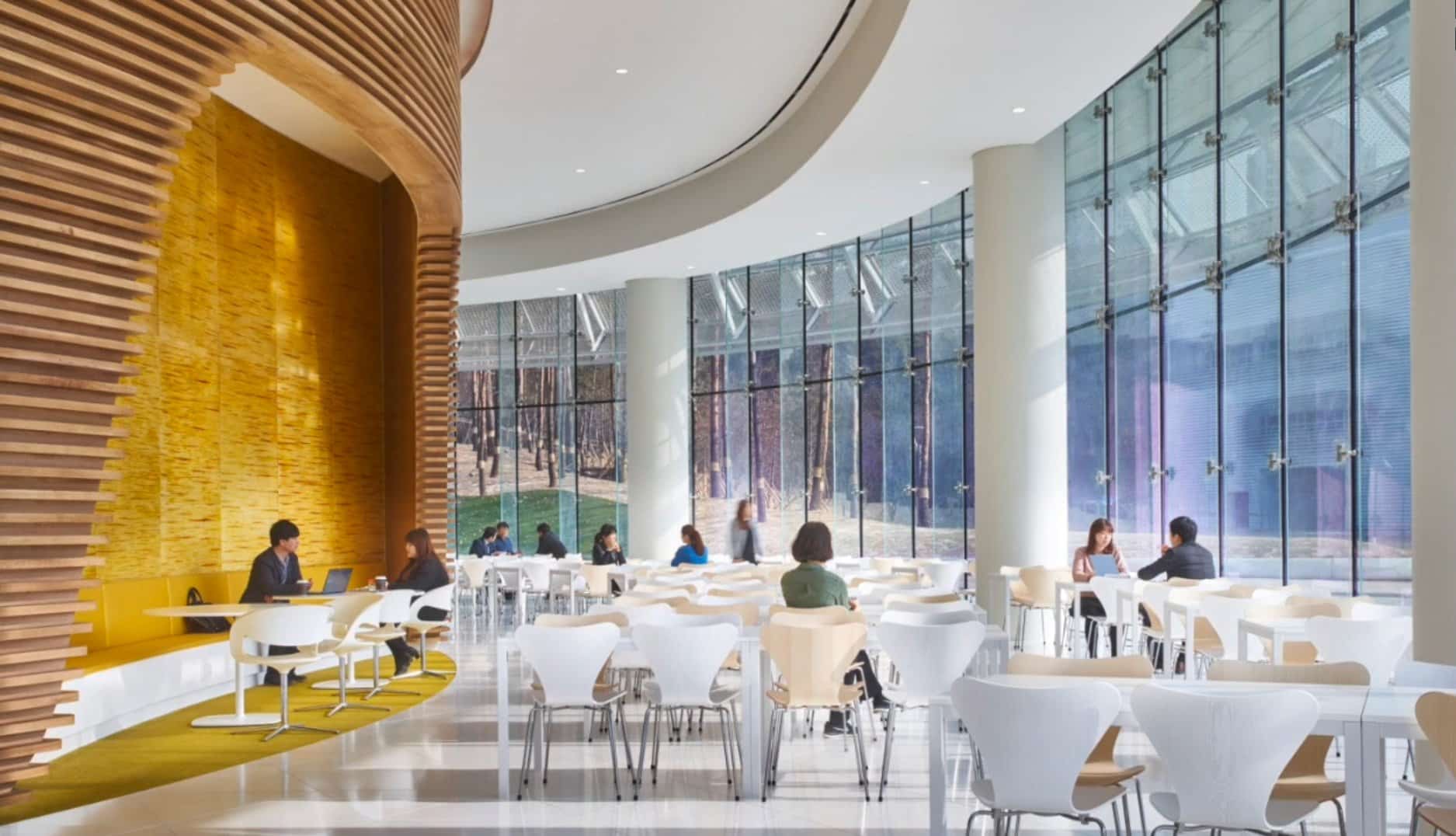
4. Like many modern office environments, CJ Blossom Park offers casual “in-between” spaces, such as coffee and tea bars as well as cafeterias, as shown above.
As we mentioned earlier, around 13% of the CJ Blossom Park floor plate (100,000 sq. ft) is dedicated to ancillary functions. These include expansive coffee and tea bars as well as cafeterias designed to encourage spontaneous collaboration between employees. They also provide a comfortable place for taking rejuvenating breaks and enjoying nutritious meals for optimal work performance.
Good Laboratory Design Can Help Recruiting and Retention Programs
As the Baby Boomer generation retires from the employment scene, organizations of all kinds are facing an increasing challenge in trying to recruit and retain talented employees.
Forward-thinking businesses have been researching this problem for quite some time.* They’ve discovered that today’s younger workers, the Millennial, Gen X, and Gen Z generations, pay greater attention to issues of how to maintain a good work/life balance or what their physical work environment looks like when making career decisions.
(*You can read our own Formaspace report on the attitudes and expectations of younger generation worker here.)
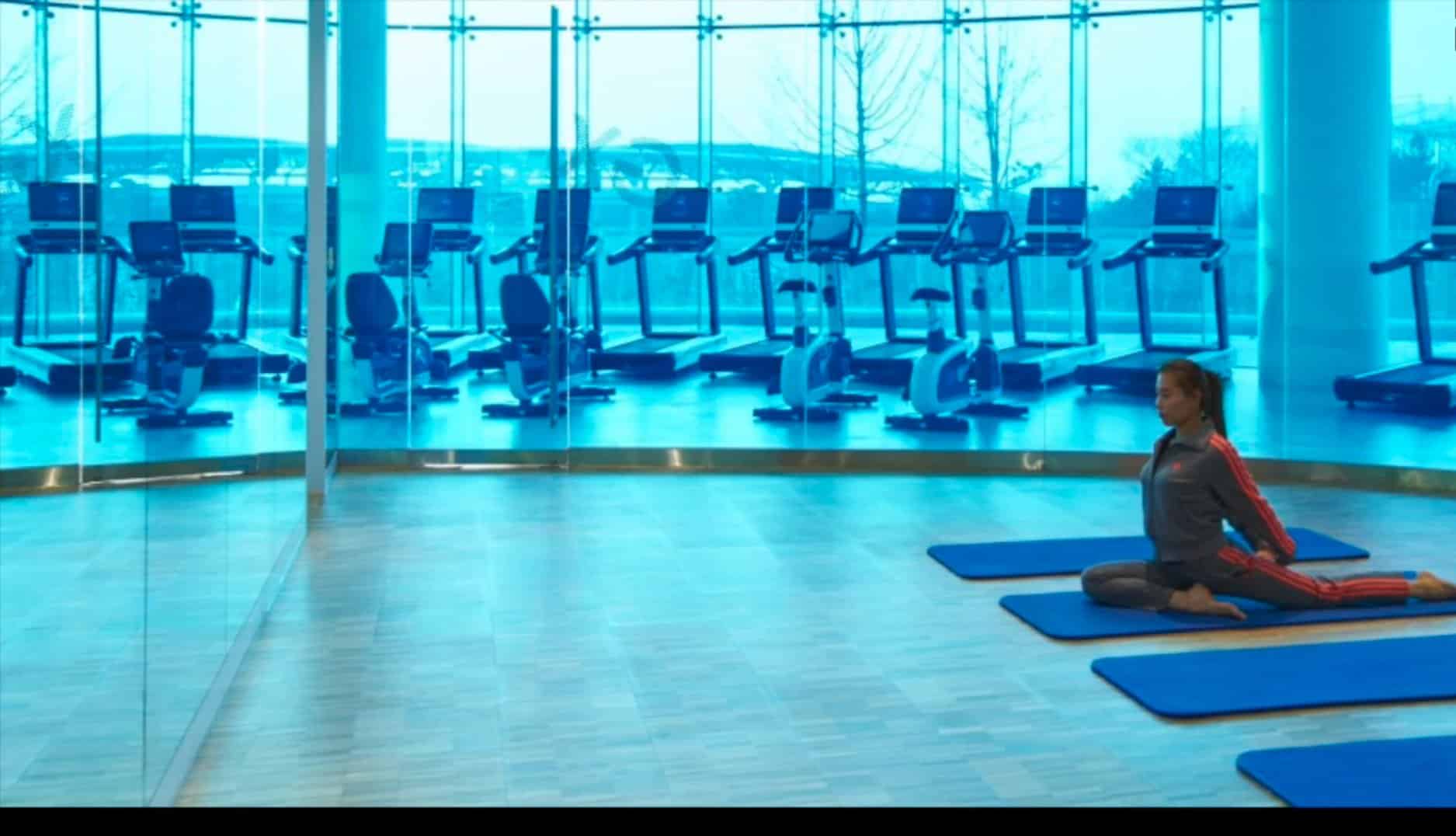
5. Amenities, such as a wellness center, offer lab employees access to gym equipment and a yoga studio to relax and rejuvenate during long hours at work.
As a result, many businesses have been upping their game to attract workers, by offering increased amenities of work from on-site wellness programs, yoga classes and childcare to creating more attractive, open work environments that appeal directly to Millennial, Gen X, and GenZ workers.
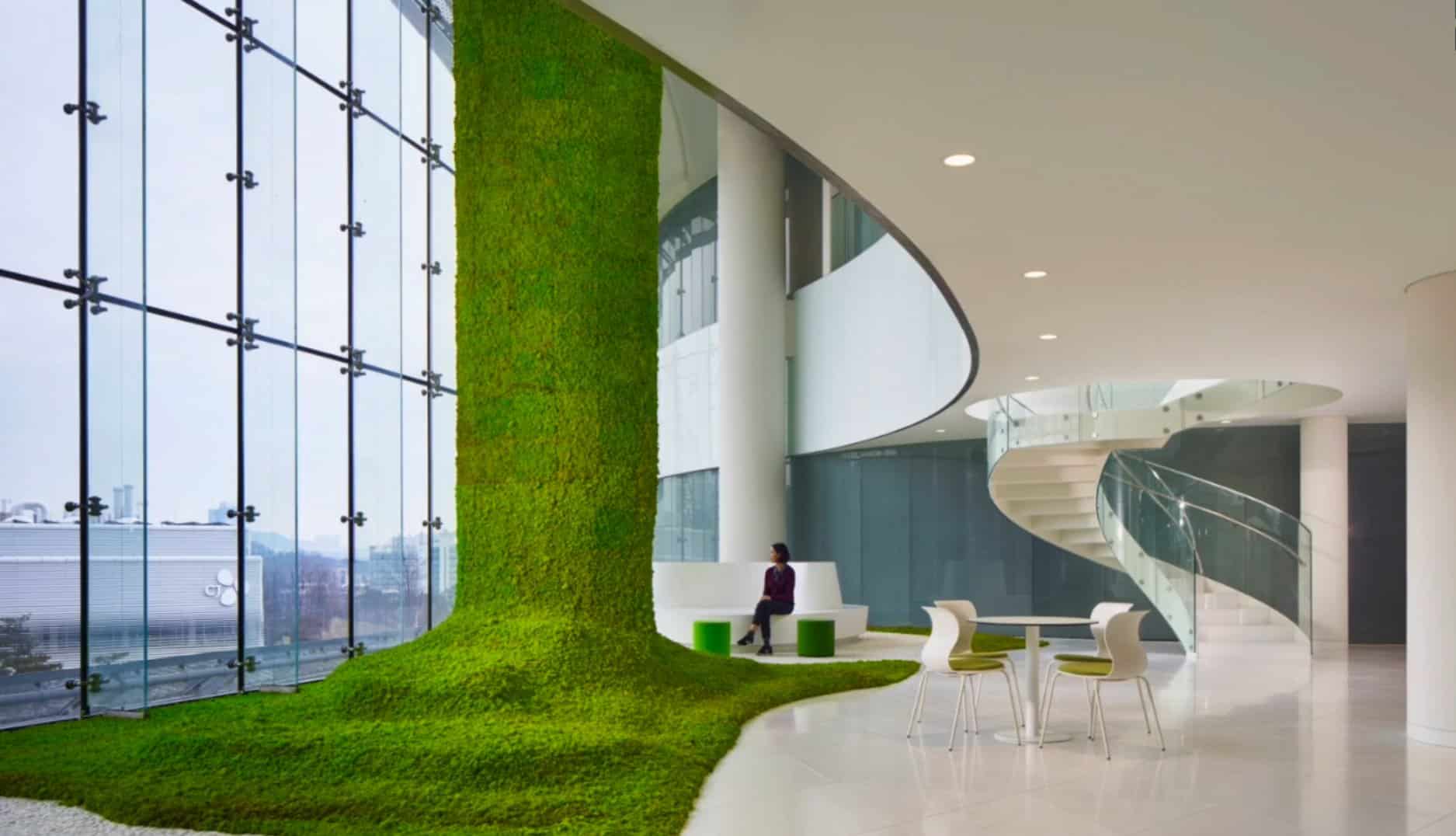
6. Example of biophilic design within a concourse area of a science park laboratory building.
The architects at CannonDesign* incorporated another hot trend – biophilic design – into the CJ Blossom Park facility. The biophilic concept, which rates highly among younger generations, brings the elements from the outside environment, such as moss walls or extensive plantings, inside the building.
*CannonDesign architect Alyssa McFarland recently joined us for a web discussion on lab design trends. Replay the webinar here.
7. Open spaces with abundant natural light and clear sightlines help visually connect the different functions within a laboratory facility.
Finally, it’s important to incorporate another amenity that employee satisfaction surveys indicate is highly prized by today’s younger workers: providing abundant natural light and open sightlines that eliminate closed, claustrophobia-inducing spaces.
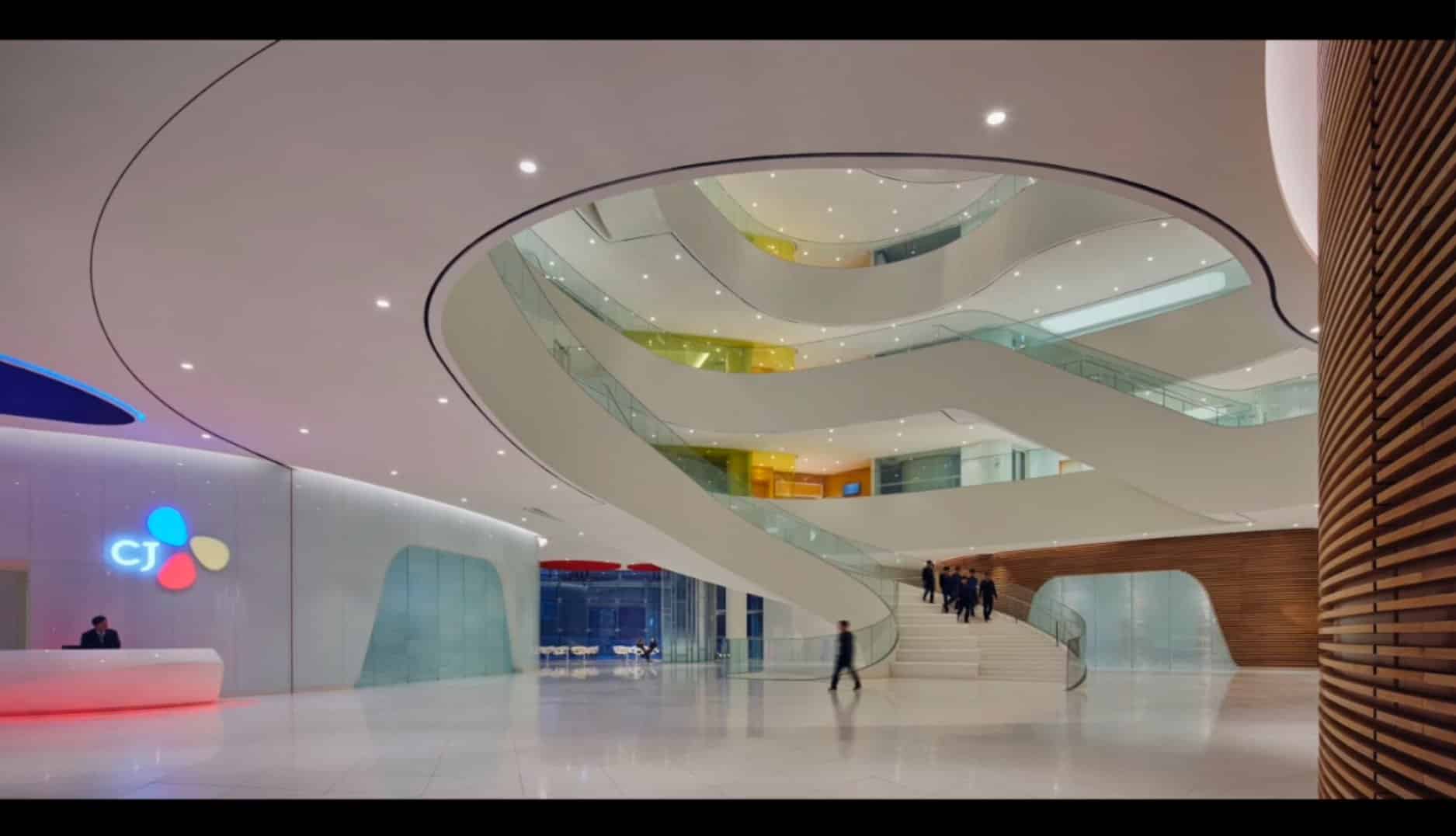
Get Your Laboratory Furniture Direct from the Source: Formaspace
Are you ready to build the lab of the future?
If you can imagine it, we can build it.
As a GSA Schedule Supplier manufacturer of exclusively American-made products, Formaspace has a long track record in helping our clients design and build out laboratory facilities.
We manufacture all our built-to-order laboratory furniture here at our Austin, Texas headquarters. We also offer laboratory design consulting, professional construction management, and turn-key on-site installation services.
Did you know that three out of four of our commercial customers are listed in the Fortune 500? And we have over 350 universities and colleges among our customers (including nearly all the Ivy League institutions).
Want to learn more about how to collaborate with Formaspace to make your next laboratory project or facility remodel a success?
It all starts with a call. Contact your Formaspace Design Consultants today.


